11th Asian Maize Conference is the BIGGEST yet
The 11th Asian Maize Conference “Addressing climate change effects and meeting maize demand for Asia” took place during 07-11 November 2011 in Nanning, China. Nearly 375 scientists and resource personnel from 22 maize-growing countries participated, along with representatives of several large seed companies and NGOs.
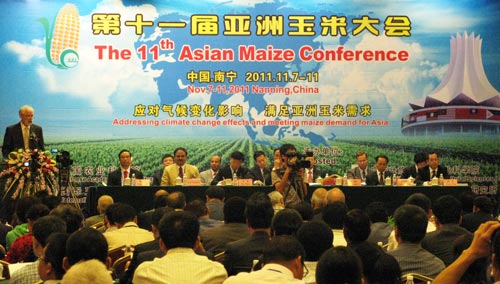
The conference was jointly organized by CIMMYT and the Chinese Academy of Agricultural Sciences (CAAS), and hosted by the Guangxi Academy of Agricultural Sciences (GXAAS) and the Guangxi Maize Research Institute (GMRI). The choice of location recognizes the increasing demand for maize in China; whilst China grows more maize than any other crop, and produces 180 million tonnes annually, it also imports nearly 14 million tonnes. China’s expanding middle class is eating more poultry, eggs, and pork; meat consumption in China has tripled since 1980 and China currently accounts for half the world’s consumption of pork. Of the total maize produced in Asia, 70% is used to feed animals, whilst just 23% is used for direct consumption.
Maize consumption is also increasing in other Asian countries: in Indonesia, imports of maize are estimated to double from 2010 levels to 3.2 million tonnes this year, and at 16 million tones, Japan is the world’s largest importer of maize. These increases are expected to continue.
The conference was opened by Yangrui Li (President, GXAAS), Ren Wang (Vice-President, CAAS), Thomas Lumpkin (Director General, CIMMYT), and Chen Zhangliang (Vice-Governor, Guangxi Provincial Government). They highlighted the growing importance of maize in the developing world, especially Asia, and the need for strong international collaborations to address challenges in maize-based systems.
Keynote speakers included BM Prasanna (Director, Global Maize Program, CIMMYT), Shihuang Zhang (Chief Expert, Crop Science Institute, CAAS), Greg Edmeades (retired scientist and former CIMMYT Maize Physiologist), Daniel Jeffers (Maize Breeder, CIMMYT-China), Gary Atlin (Associate Director, Global Maize Program, CIMMYT), Roberto Tuberosa (University of Bologna, Italy), Kevin Pixley (Director, Genetic Resources Program, CIMMYT), Adrian Johnson (Vice-President, International Plant Nutrition Institute), Bekele Shiferaw (Director, Socioeconomics Program, CIMMYT), and Yiqing Song (CAAS), along with many invited speakers. They covered a range of topics from conservation agriculture systems, to site-specific nutrient management and nutritionally improved maize. Sessions also highlighted recent developments in the CIMMYT-led MAIZE comprehensive research program, including technological advances such as the use of double haploids, phenotyping tools, and the large-scale genotyping initiative, Seeds of Discovery.
Participants also discussed the increasing frequency of natural disasters in Asia, and the effects these have on food production. Floods in Pakistan, droughts in China, and water stress in India have all impacted the ability of Asian maize producers to meet consumption demands.
The conference concluded with a Maize Field Day, organized by Cheng Weidong at the GMRI research station, where landraces and promising hybrids were demonstrated. Participants praised the success of the conference, with Bijender Pal (Senior Maize Breeder, Bioseed) stating: “The conference was very well organized, with excellent lectures by the experts on various key aspects, and a comprehensive treatment of the key issues for maize in Asia.”
Warming up to the conference with the MAIZE Asia Interface
As a preface to the Asian Maize Conference, almost 70 scientists, representatives of private sector seed companies, members of the International Maize Improvement Consortium of Asia, and NGOs participated in the MAIZE Asia interface on 07 November 2011. Chaired by CIMMYT’s Director General, Thomas Lumpkin, the meeting aimed to present the main strategic initiatives and vision of the MAIZE project to key Asian partners and stakeholders, outline challenges, promote collaborations, and discuss how to disseminate relevant technologies for the benefit of smallholder maize farmers in Asia.
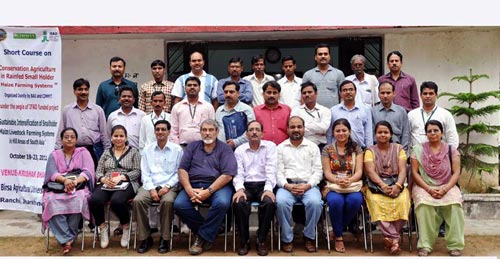
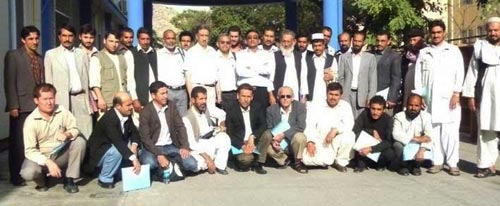
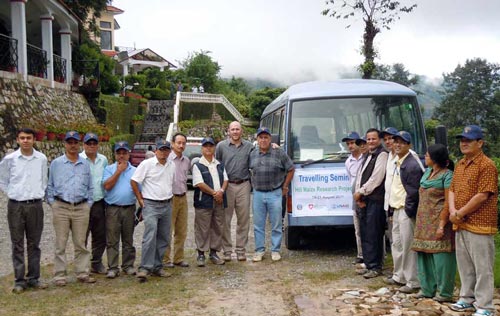 During 19-21 August 2011, a travelling seminar on “Maize Research and Development in the Hills of Nepal” was organized by the CIMMYT-led Hill Maize Research Project (HMRP), Nepal Agricultural Research Council (NARC), and the Nepal Department of Agriculture (DoA). The seminar offered policy makers first-hand information on maize varietal development, seed multiplication, technology dissemination, and HMRP’s efforts to improve food security and livelihoods of small-scale and disadvantaged farmers in the region. The 25 participants included representatives from the National Planning Commission, Ministry of Agriculture and Cooperatives, National Seed Board, NARC, DoA, donors (SDC and USAID), and NGOs.
During 19-21 August 2011, a travelling seminar on “Maize Research and Development in the Hills of Nepal” was organized by the CIMMYT-led Hill Maize Research Project (HMRP), Nepal Agricultural Research Council (NARC), and the Nepal Department of Agriculture (DoA). The seminar offered policy makers first-hand information on maize varietal development, seed multiplication, technology dissemination, and HMRP’s efforts to improve food security and livelihoods of small-scale and disadvantaged farmers in the region. The 25 participants included representatives from the National Planning Commission, Ministry of Agriculture and Cooperatives, National Seed Board, NARC, DoA, donors (SDC and USAID), and NGOs.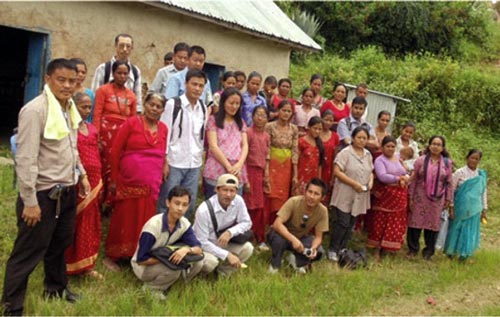 The following day featured a visit to the Hill Crop Research Program (HCRP), Kabre, Dolakha. Participants observed the onsite maize research and development activities, such as source seed production of improved maize varieties, and had the opportunity to interact with scientists at the station. N.P. Adhikari, Director of Crops and Horticulture, NARC, and D.B. Gurung, National Maize Coordinator, complimented the scientists for their accomplishments in maize research and development, both at the station and in the field.
The following day featured a visit to the Hill Crop Research Program (HCRP), Kabre, Dolakha. Participants observed the onsite maize research and development activities, such as source seed production of improved maize varieties, and had the opportunity to interact with scientists at the station. N.P. Adhikari, Director of Crops and Horticulture, NARC, and D.B. Gurung, National Maize Coordinator, complimented the scientists for their accomplishments in maize research and development, both at the station and in the field.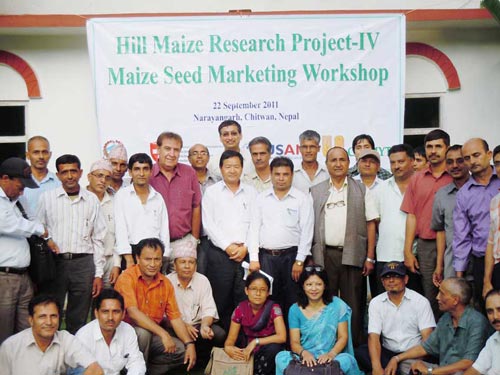
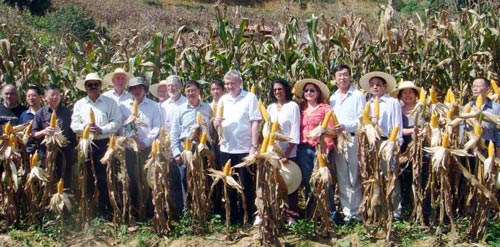
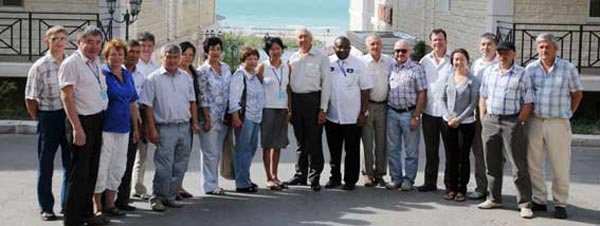
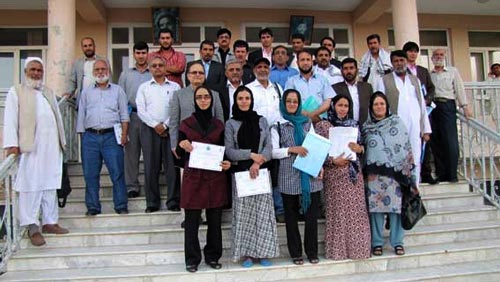
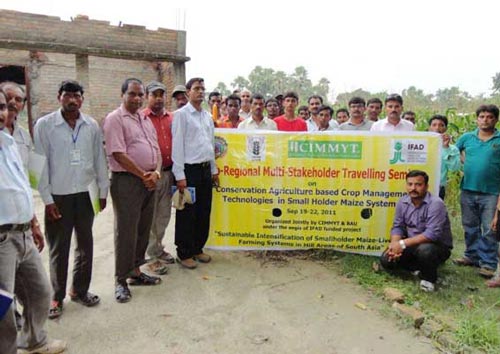 During 19-22 September 2011, Birsa Agricultural University (BAU), Jharkhand, India, hosted the Sub-Regional Multi-Stakeholder Travelling Seminar entitled “Conservation Agriculture Based Crop Management Technologies in Smallholder Maize Systems.” Organized jointly by BAU and CIMMYT-India, under the aegis of the IFAD “Sustainable Intensification of Smallholder Maize-Livestock Farming Systems in Hill Areas of South Asia” project, the seminar was attended by 37 scientists, extension agents and NGO representatives, students from Krishi Vigyan Kendra’s (KVKs) and BAU, and farmers from the three districts of Jharkhand.
During 19-22 September 2011, Birsa Agricultural University (BAU), Jharkhand, India, hosted the Sub-Regional Multi-Stakeholder Travelling Seminar entitled “Conservation Agriculture Based Crop Management Technologies in Smallholder Maize Systems.” Organized jointly by BAU and CIMMYT-India, under the aegis of the IFAD “Sustainable Intensification of Smallholder Maize-Livestock Farming Systems in Hill Areas of South Asia” project, the seminar was attended by 37 scientists, extension agents and NGO representatives, students from Krishi Vigyan Kendra’s (KVKs) and BAU, and farmers from the three districts of Jharkhand.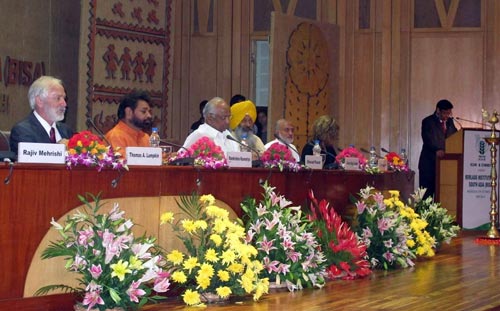 The Borlaug Institute for South Asia (BISA) was officially launched on Wednesday, 5 October 2011, at the A.P. Shinde Symposium Hall, NASC Complex in New Delhi, India.
The Borlaug Institute for South Asia (BISA) was officially launched on Wednesday, 5 October 2011, at the A.P. Shinde Symposium Hall, NASC Complex in New Delhi, India.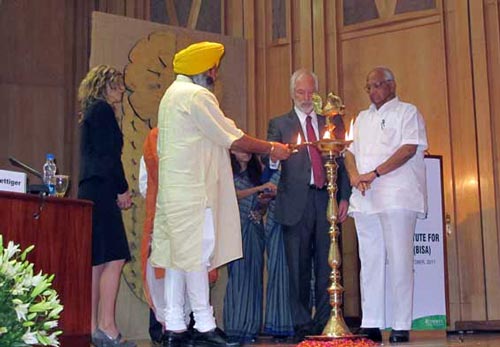 The official opening ceremony was marked by a cultural event featuring classical Indian dancing including choreographical styles from all three states. In addition to CIMMYT-India staff and speakers, also present at the launching ceremony were the management committee of CIMMYT and its Board of Trustees. The launching ceremony was attended by representatives from CIMMYT’s sister institutions ILRI, IRRI, ICARDA, and Bioversity, as well as by the Allan Mustard Institute of the US Dept. of Agriculture and the private sector. The event was closed by a dinner and a speech by the Board of Trustees Chair, Sara Boettiger.
The official opening ceremony was marked by a cultural event featuring classical Indian dancing including choreographical styles from all three states. In addition to CIMMYT-India staff and speakers, also present at the launching ceremony were the management committee of CIMMYT and its Board of Trustees. The launching ceremony was attended by representatives from CIMMYT’s sister institutions ILRI, IRRI, ICARDA, and Bioversity, as well as by the Allan Mustard Institute of the US Dept. of Agriculture and the private sector. The event was closed by a dinner and a speech by the Board of Trustees Chair, Sara Boettiger.